Air fryers are the hot new kitchen appliance taking the world by storm. A convection oven that sits right on your countertop and makes your favorite fried foods that taste like deep frying but without the grease? This sounds almost too good to be true! But there are so many air fryers available on the market nowadays, and each has so many different options. Knowing what to look for and how to use an air fryer can be daunting!
If you just got a brand new air fryer or are thinking of getting one, read below to learn how an air fryer works and how to use an air fryer to make your favorite foods! From air fryer chicken tender to sweet potato fries, air fryers have the power to transform your favorite dishes into healthier yet equally delicious versions.
Types Of Air Fryers
An air fryer is a kitchen appliance that cooks food using hot air, allowing you to fry, roast, bake, broil, crisp, dehydrate, and reheat various dishes. It's an incredibly versatile kitchen appliance that can be used in many applications. Although there are many different types of air fryers, they can be broadly categorized into two groups:
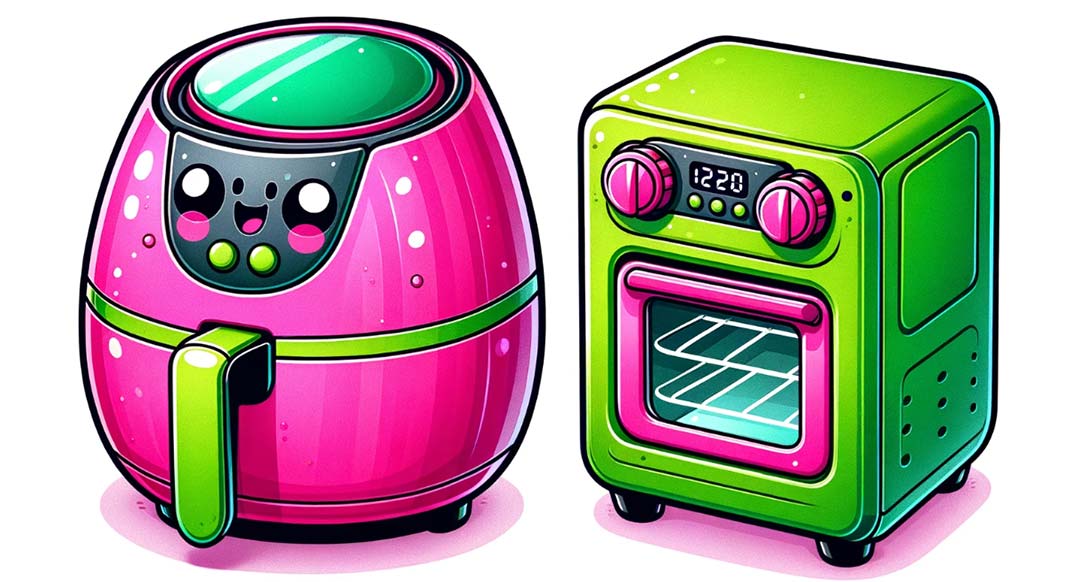
Basket-Style Air Fryer
Basket-style air fryers are the most common air fryer style you will find on the market. This compact powerhouse features a user-friendly design, boasting a pull-out basket that makes cooking and cleaning a breeze. Its vertical build and small footprint allow it to fit snugly on your countertop, conserving valuable kitchen space while adding a touch of contemporary style.
Air Fryer Ovens
The air fryer oven has a similar appearance to a conventional toaster oven. Its spacious interior and multiple-shelf design allow for cooking larger quantities and varieties of food simultaneously, making it a game-changer for meal prep and family dinners.
How To Use An Air Fryer
Step 1: Meet Your Air Fryer

Before using your air fryer, it's crucial to familiarize yourself with its parts, features, and safety precautions as outlined in the instruction manual. This ensures you understand the specific functions, how to assemble and disassemble parts for cleaning, and any unique features your model offers.
Step 2: Place The Air Fryer On A Heat-Resistant Surface
Air fryers generate a significant amount of heat. Positioning it on a stable, heat-resistant surface ensures safety and prevents heat damage to your countertops. Ensure the area around the air fryer is clear of any objects that could obstruct the airflow or be damaged by heat.
Step 3: Preheat Your Air Fryer (If Needed)
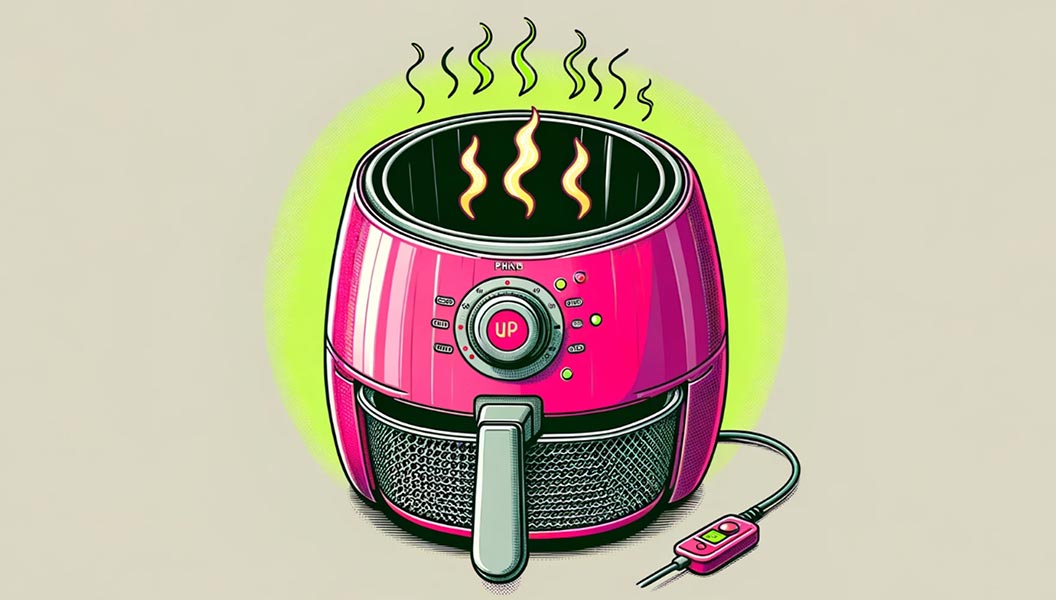
Preheating an air fryer is not always a necessary step, and whether you should preheat or not depends on air fryer models and the types of food you're cooking. Most air fryers are equipped with a built-in preheat option. Without a specific preheat setting in your appliance, you can activate it at the required temperature and let it warm up for approximately 2-3 minutes before cooking. When in doubt, consulting the user manual of your air fryer is advisable.
Preheating is particularly advised for baked goods or roasted dishes that necessitate accurate temperature management, including cakes, muffins, or meats. By preheating, food begins to cook the moment it's placed in the basket, avoiding the extended cooking times and uneven browning associated with starting from a cold appliance. Achieving the desired temperature prior to cooking ensures uniform results. For those aiming for a crispy finish, such as with frozen french fries or breaded poultry, preheating can enhance the cooking process and improve texture.
Preheating can be bypassed for simple recipes where the precise temperature isn't crucial, including many frozen items, reheating leftovers, and straightforward air frying tasks. Skipping preheating can be a time-saver for dishes where exact timing isn't as critical, like reheating pizza or cooking delicate foods such as fish fillets. Additionally, starting without preheating can be strategically beneficial for foods prone to quick browning at the edges, like certain vegetables.
Step 4: Prepare Your Ingredients
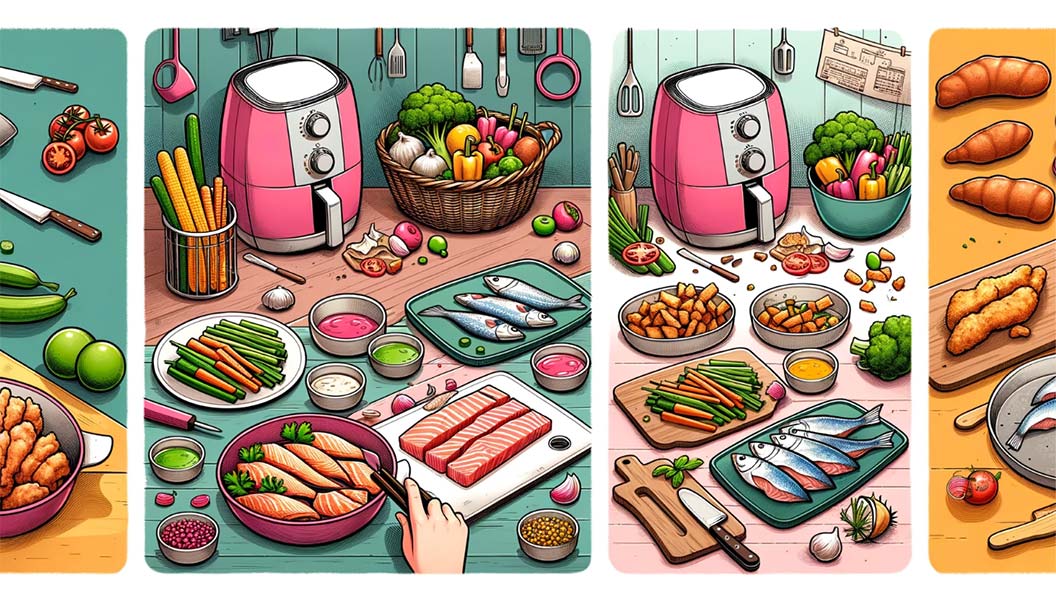
Properly preparing your ingredients is key to achieving great results. Depending on what you're cooking, you might need to marinate, season, or coat your food in a light layer of oil or cooking spray. For example, toss sliced potatoes in a small amount of oil for crispy french fries and season with salt and your favorite spices before placing them in the air fryer basket.
Step 5: Load Your Air Fryer Basket
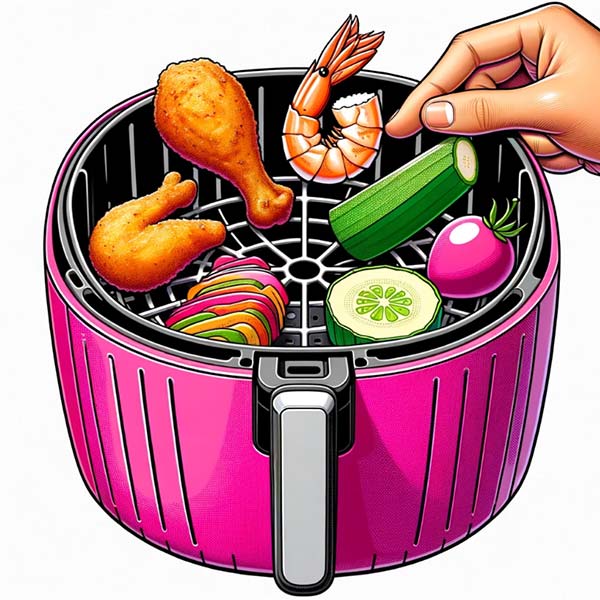
An air fryer works by having hot air circulating around the food, so don't overcrowd the air fryer drawer/ basket, nor use parchment paper or an air fryer liner.
While filling the basket to its capacity may be tempting, this will cause the food to cook unevenly. Arrange the food in a single layer in the basket for crispy foods that are all finished cooking simultaneously. Avoid stacking or layering the food in the basket. If needed, you can cook in multiple batches to ensure even cooking.
If you are using an air fryer oven, it typically comes with an air fryer basket as well. Open the door and slide in trays or racks, spacing food evenly to promote optimal air circulation. With more room to spread out, you can cook larger batches or multiple types of food at once.
Step 6: Select Your Preset (Optional)
All air fryers have a manual air fry function, where you determine the cook time and temperature. However, many of the best air fryers feature multiple preset programs. Refer to your air fryer instruction manual to determine if a specific air fryer setting is suitable for the type of food you're preparing. If it does not, you can set your desired air fryer temperature.
Step 7: Start Cooking
Insert the air fryer basket into it, and start cooking! The total cooking time for air fryers is often much quicker than if those same foods were cooked in an oven and deep fryer, so stay within a reasonable distance. You'll need to move on to the next step in a few minutes!
Step 8: Shake Halfway
Some air fryer recipes may require you to shake the basket or flip the food halfway through the cooking process. This step ensures that both sides of the food become evenly browned and crispy. Check your recipe or refer to the cooking instructions for guidance.
If you are using air fryer ovens, you will need to turn the food halfway manually to ensure they cook evenly. If it's easy for you to slide the "basket" out, you can give it a good shake before sliding it back into the oven
Step 9: Check For Doneness
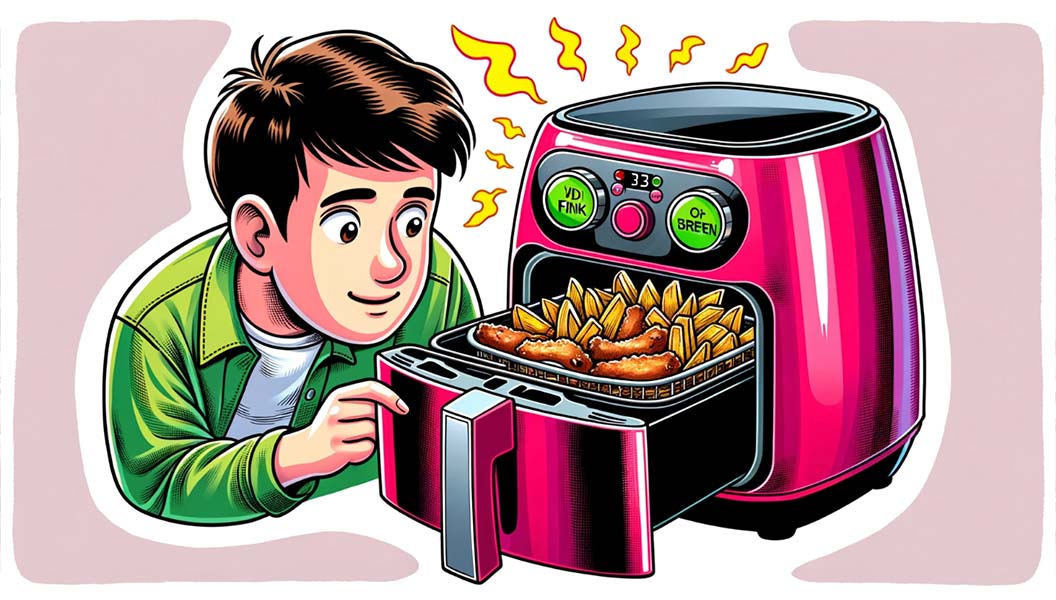
Towards the end of the cooking time, keep a close eye on your food to avoid overcooking. You can open the air fryer to check for doneness. For meats, it's advisable to use a meat thermometer to ensure they've reached the desired internal temperature.
Step 10: Remove The Food And Enjoy!
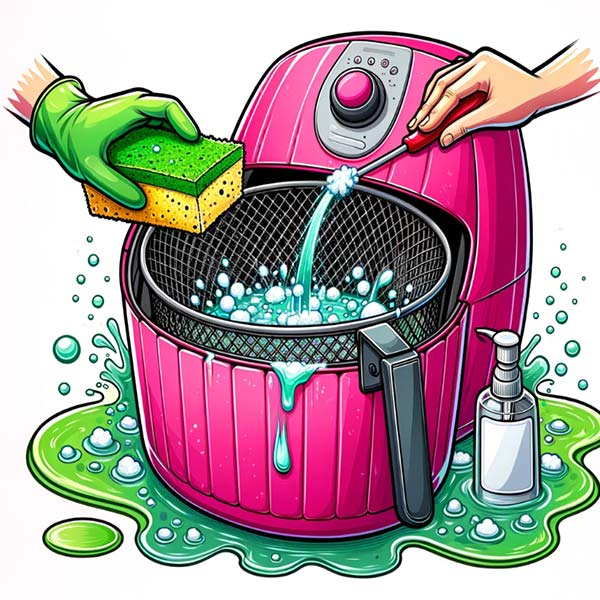
Some popular air fryers will automatically turn off when the cooking time finishes. Others will beep but continue to stay on - similar to a traditional oven. Know how your air fryer works! When the food is finished cooking, remove the basket or tray, set it down on a safe surface, remove your food, and enjoy!
Step 11: Clean The Air Fryer
Cleaning an air fryer is easy and will be a necessary step after each use. Allow the air fryer to cool completely before attempting to clean it. Most air fryers have removable parts that are dishwasher safe, but check your manual to confirm. Wipe down the exterior and interior surfaces with a damp cloth. Regular cleaning is important to prevent food buildup and ensure your air fryer continues to operate efficiently.
Tips For Using Air Fryer
Don't Overcrowd
To kick things off, remember that airflow is everything. Overcrowding the basket is a common mistake that can lead to uneven cooking. Your air fryer cooks by circulating hot air around the food, so give your meals room to breathe. Cooking in batches may take a bit longer, but the reward is perfectly cooked, evenly crispy food every time.
Temperature Matters
Finding the right temperature is crucial for air frying success. While the ideal temp varies by dish, a good rule of thumb is to set your air fryer 25 degrees Fahrenheit lower than conventional oven recipes. Most air fryers heat up quickly, so adjusting the temperature ensures your food cooks thoroughly without burning. When in doubt, consult your air fryer's manual or look up specific recipes for guidance.
Use A little Bit Of Oil
One of the air fryer perks is that the air fryer requires very little oil, and a little bit goes a long way in achieving that irresistible crispiness. While most frozen foods, such as onion rings, come pre-coated and don't need extra oil, other items, like frozen ravioli, can benefit from a light brush or spray to prevent dryness and enhance texture. Opt for a high-smoke point oil like coconut oil or avocado oil. Apply it with a brush or use a refillable spray bottle to coat your food lightly. This method ensures even coverage without excess.
Beware Of Aerosol Sprays
Important to note: steer clear of commercial aerosol cooking sprays in your air fryer. These sprays can contain additives that might damage the non-stick coating of your air fryer basket over time. Instead, apply your oil to a refillable oil mister or a simple brush. This protects your appliance and gives you control over the amount and type of oil you're using.
Shake, Flip, Rotate
Halfway through cooking, don't forget to shake the basket or flip your food. This simple step is crucial for items like fries, vegetables, or small bites. It ensures every piece gets exposed to the hot circulating air, resulting in an even golden crisp.
Embrace Experimentation
Lastly, the air fryer is versatile, so don't be afraid to experiment. The possibilities are endless, from baked goods to roasted veggies and even hard-boiled eggs. Keep an open mind, adjust settings as you learn, and don't forget to have fun with it.
What Can Be Cooked In An Air Fryer
An air fryer can be used to cook juicy protein main dishes, healthy vegetable side dishes, and scrumptious baked goods. The cooking process makes it particularly suitable for crispy foods. It's great for cooking traditionally fried foods, maintaining that crunchy exterior without all the excess oil and grease.
Air frying can be used to cook:
Crispy vegetables, like Brussels sprouts and baked potatoes
Favorite frozen foods, such as chicken wings
Foods typically cooked by deep frying, like chicken tender and french fries
Greasy foods without the need to add more oil
Reheat leftovers like fried chicken, pizza, and more
It can also be used to reheat food to avoid the sogginess that microwaves tend to give leftovers!
